From Children of the Mushroom to Lady: Unearthing the Lost Prog Rock Recordings
The Children of the Mushroom were one of those Californian outfits who seemed to materialise, burn brightly, and vanish before anyone quite registered their presence.
Originating in 1967, they occupied the more somber areas of psych, favoring a sound much weightier and more contemplative over the common bright vocal arrangements. Their release, ‘August Mademoiselle,’ suggested a band extending beyond the boundaries of garage rock, propelled by fuzz guitars, minor chords, and captivating sadness.
Jerry McMillen remembers the start: “The initial issue: every member was quite novice on their instrument.” He continues, “Al began playing bass, Dennis took up drumming, and Mark McKean and I both handled guitars. We were already developing original compositions beyond the cover songs we performed—that might have been the catalyst.”
The single ‘August Mademoiselle’ featured lyrics and music penned by Bob Holland, with McMillen adapting the vocal performance. McMillen states, “The track itself was inspired by the way of life of my future mother-in-law. The deployment of the term “august” carried a dual meaning in my view. It can imply royalty or characterize someone in their middle or later years.”
By 1970, their style had solidified; under the new name Lady, they transitioned into more progressive directions. The Hammond organ became central, the flute was integrated, and their compositions expanded into lengthier, grander structures. The 1971 recordings, now issued via Outsider (Guerssen), showcase a group whose lofty concepts were starting to match their talents.
As they became Lady in 1970, progressive rock elements were integrated. McMillen explains, “Larry initially picked up the bass, then introduced a Hammond organ complete with a Leslie speaker to the ensemble.” He adds, “That fundamentally altered both the sound and the arrangement of the material.” Jim Rolfe reflects, “We performed purely from feeling. We shared an understanding that was evident in our playing. I believe that is the essence of a superior band; it lies not in what is spoken, but in the wordless comprehension between members.”
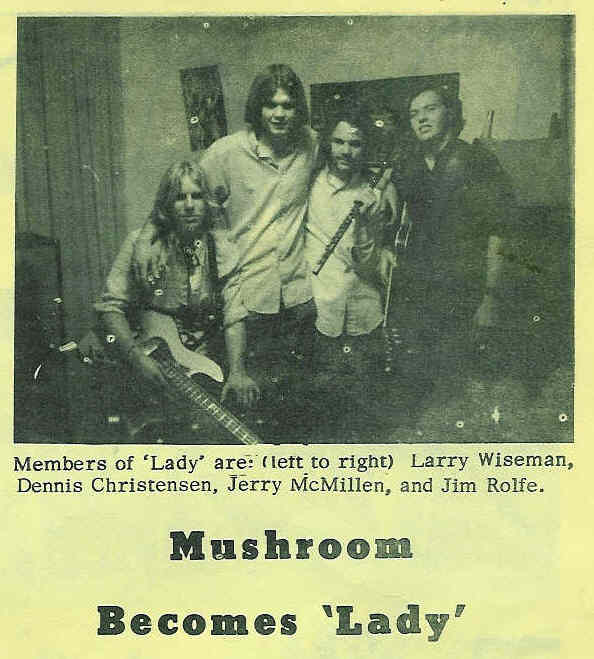
“With new players came new ideas and skills, both in musical ability and in composing material.”
What sparked the formation of Lady right after Children of The Mushroom? What were the defining differences in vision and direction between the two bands?
Jerry McMillen: To begin, I want to thank the team at Guerssen for their interest in Children of the Mushroom and their efforts to produce both a first and a second album under the “Children of the Mushroom” name. They’ve been great to work with on both of these projects. I also want to thank Klemen Breznikar of “It’s Psychedelic Baby” for providing liner-note interviews on both albums.
The core members of the band were committed to continuing the relationship that we had built, but we made no discernible decisions in terms of philosophy or projections as to what might ensue music-wise. The changes in personnel would ultimately determine the course we would take. Serendipity would rule.
Jim Rolfe: We wanted to play and compose. It was a shift from the psychedelic 60s to the prog rock of the early 70s.
How did the shift in sound from Children of The Mushroom to Lady happen? Were there any particular influences or inspirations that shaped the hard prog-psych vibe of Lady?
Jerry McMillen: Slight changes began to occur when we made the decision to drop “Children” from the band name in favor of “The Mushroom.” I can’t recall just how long we were under that title before personnel changes again made the name change to “Lady” and the musical transformation inevitable.
Jim Rolfe: Like I said above, we wanted to play and compose music. Listening back, I can see we were influenced by rock and prog rock bands of the 70s. I was listening to UK and European prog and rock bands, as well as US progressive bands like Gypsy and Bloodrock, and of course many others too. I think most musicians express themselves through their influences, albeit maybe not intentionally.

Lady’s got that signature prog-psych sound, especially with the flute. How did the addition of the flute change the band’s dynamic, both in the studio and on stage?
Jim Rolfe: I saw it as another dynamic. I think we all liked Jethro Tull and Steamhammer. Jerry can chime in on this.
Jerry McMillen: Certainly the flute was instrumental in altering not only the sound but also the musical direction, lending a slightly lighter flavor to the heavy psych we had been used to. The inclusion of it was not necessarily intended, as I was not a trained flautist by any means. I took it up just to see if I could make something of it. So it took some time to incorporate its usage. Plus, it was an instrument I could freely carry about on stage, giving me the freedom to move as the moment would strike.
Can you describe the vibe of Lady’s music? What were you trying to capture or express with the band’s compositions, particularly with the intense prog-psych elements?
Jerry McMillen: This was driven mostly through personnel changes. With new players came new ideas and skills, both in musical ability and in composing material. It’s always amazing what one guitar lick or keyboard passage may lead to!
Jim Rolfe: Looking back, I don’t think we had a plan to capture anything in particular. We just played, and our jams turned into tunes. I don’t have a memory of the process exactly.

The recently released album has unreleased studio and live tracks. How did these particular recordings come about, and what made them stand out for inclusion on this album?
Jerry McMillen: It is incredible that any of these recordings survived the 53 years it took to make the two albums. Thanks to Dewey M., a good friend who funded the 1971 “Village” session, the “Lady” album was made possible. I should mention that since those funds were limited, the session had to be truncated in time spent. It was done in one take, with no overdubbing or manipulation other than an instrument sound check. The live recordings were made possible by our bass player Mike Gattenby, on equipment incapable of manipulation.
Jim Rolfe: I suppose we all agreed that these were our strong songs. In my opinion, Jerry wrote some great lyrics. They are personal to us, and that’s why I can say they were great even though all may not agree.
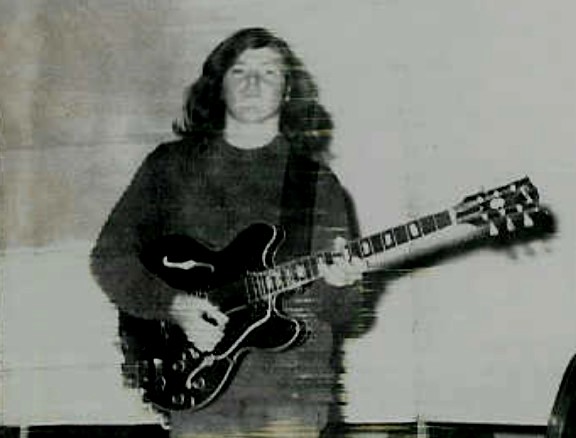

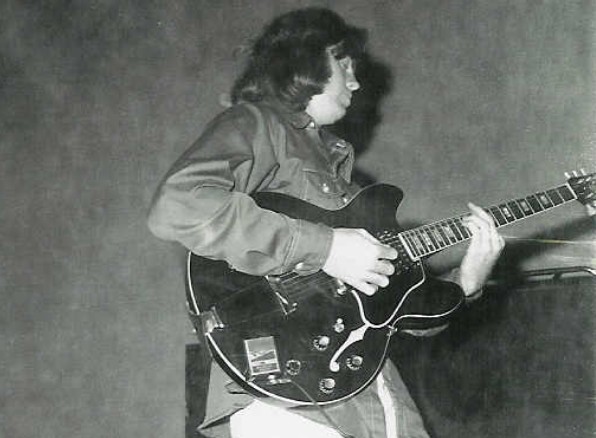
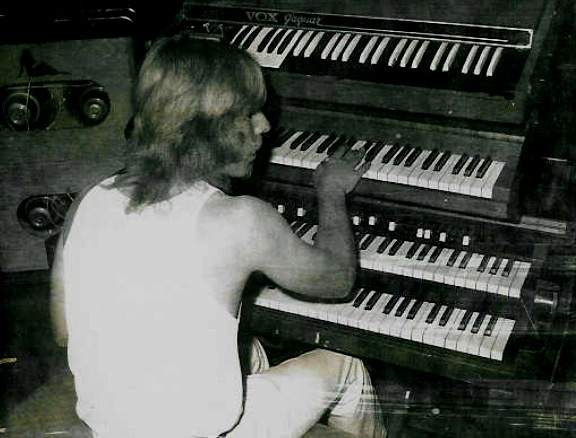
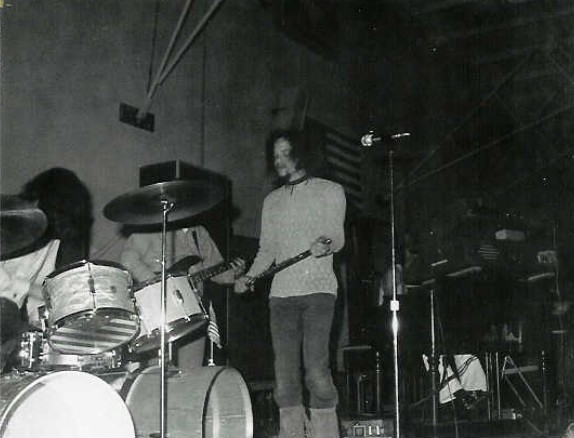
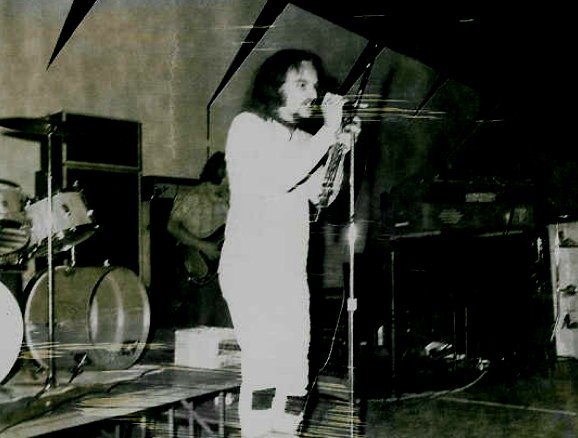
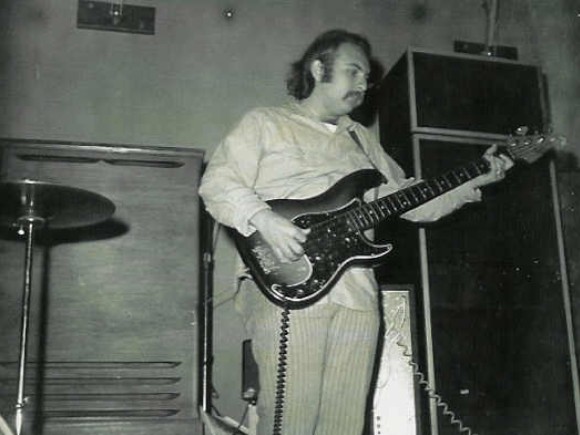
I’d love to hear some thoughts on each of the tracks that Guerssen will release. What makes these recordings special?
Jim Rolfe: Speaking of the Village recordings, one thing I was proud of is that we recorded the tracks live. I don’t remember if it was live to 2, 4, or 8 tracks. I think Baker Bigsby was the engineer. A couple of things stand out for me. One was Albie’s (Al Pisciotta) walking bass line in ‘Behind Their Eyes’ (see at around 2:50). Larry’s B3 (maybe a C3) playing throughout all the tracks and Jerry’s kick-ass vocals are great performances. What can I say, I am biased.
Jerry McMillen: One of the live songs featured on this album is titled ‘Hour of Our Lives’ (‘Insurrection’). It was written by our guitarist, Pat Van Auken. He wrote the words and music, and I am privileged to have had just a small contribution by adapting the vocal melody. I view this work as being prophetically profound as to the happenings of that time and its relevance to what reverberates in our world today.
One of the songs recorded at ‘The Village’ is called ‘Will I Be Saved.’ It was written (words and music) by Jim Rolfe and is also, in my view, prophetic in its timeless nature. It is the only one of our songs that holds a copyright in the U.S. Patent Office.
One of the live songs, ‘Evasella,’ was written by Wally Stoltz and Dave Fontana. Wally wrote the music and is featured as a keyboardist on this album. A very special thank you to Dave, who wrote the lyrics and worked hard under some difficult situations to create all the artwork on this as well as the previous album.
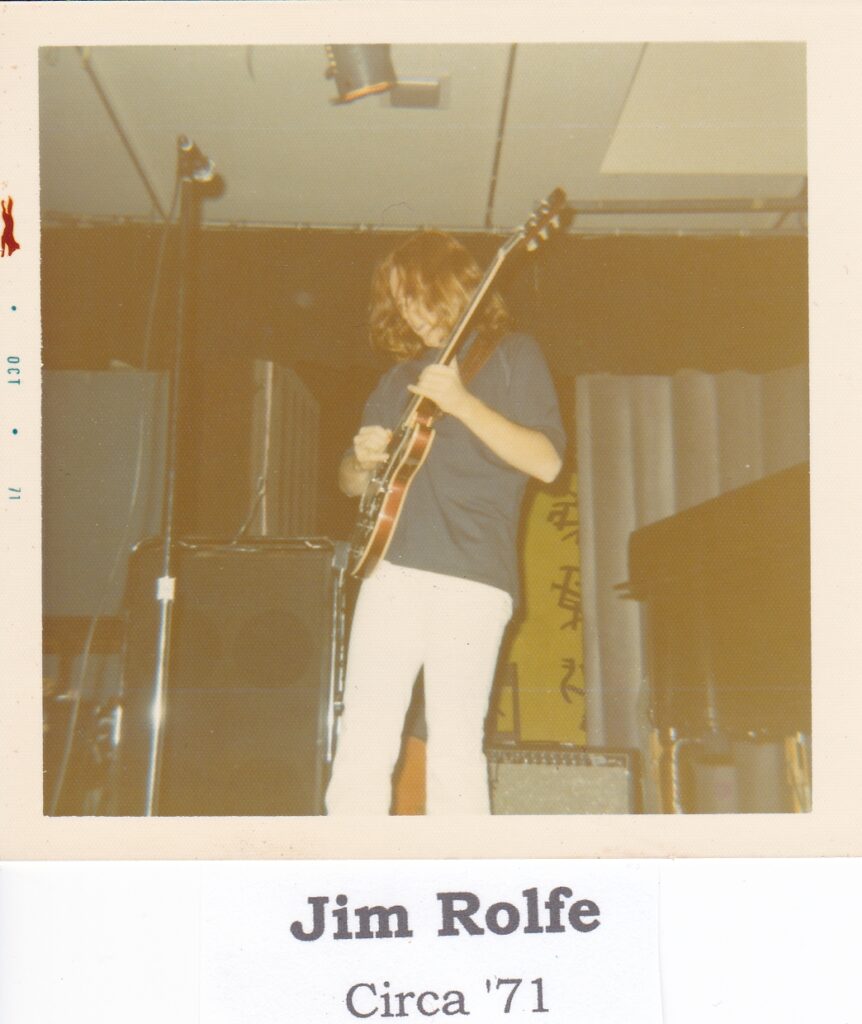
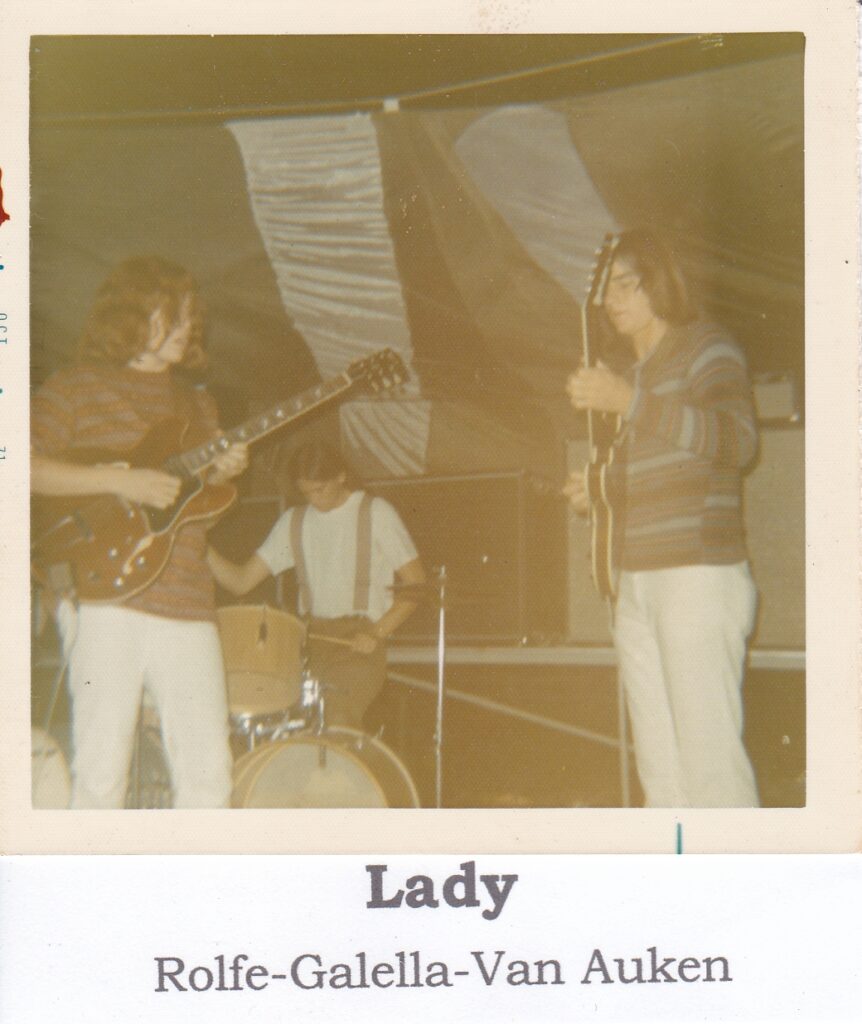
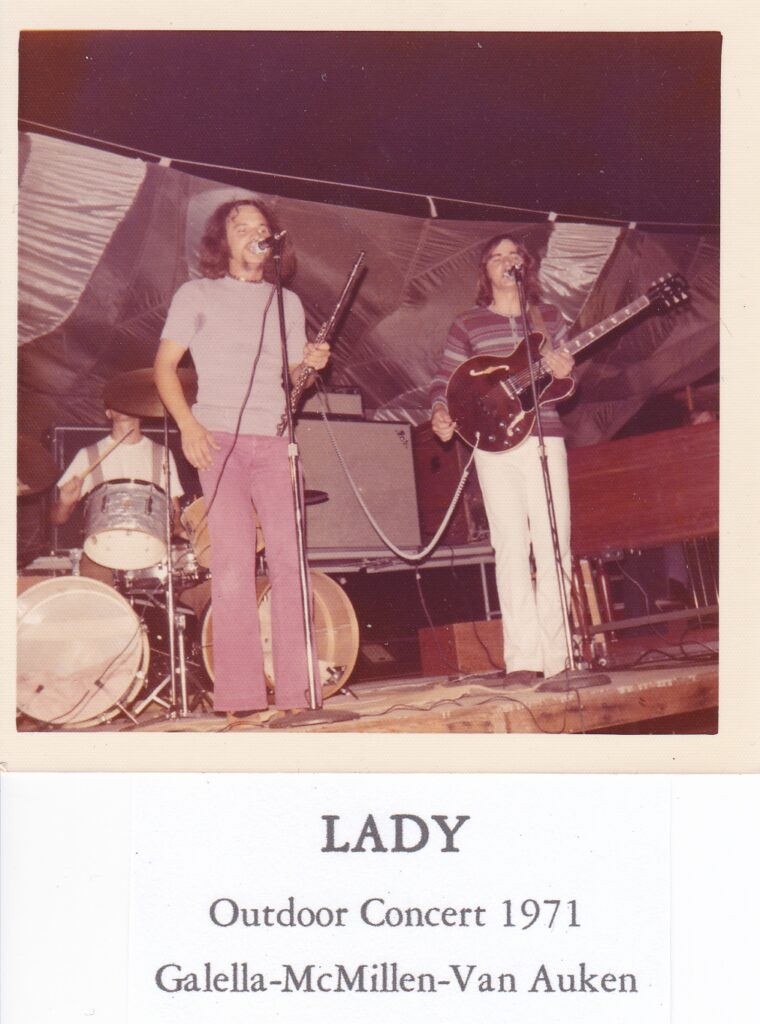
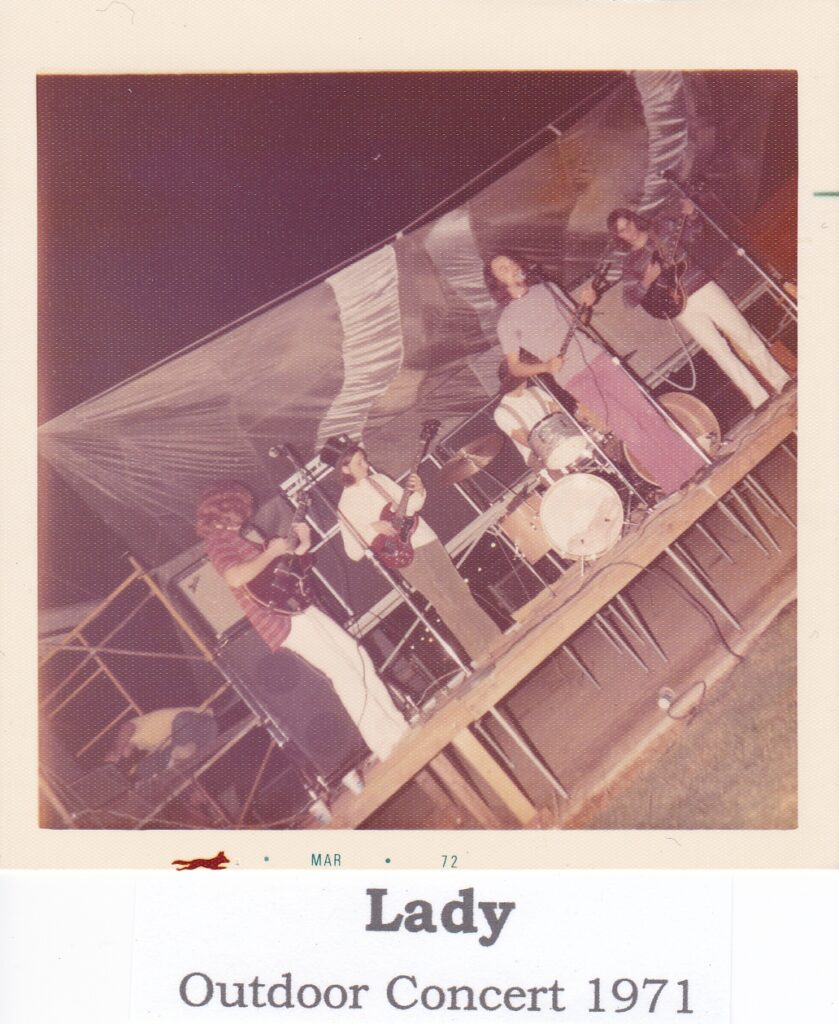
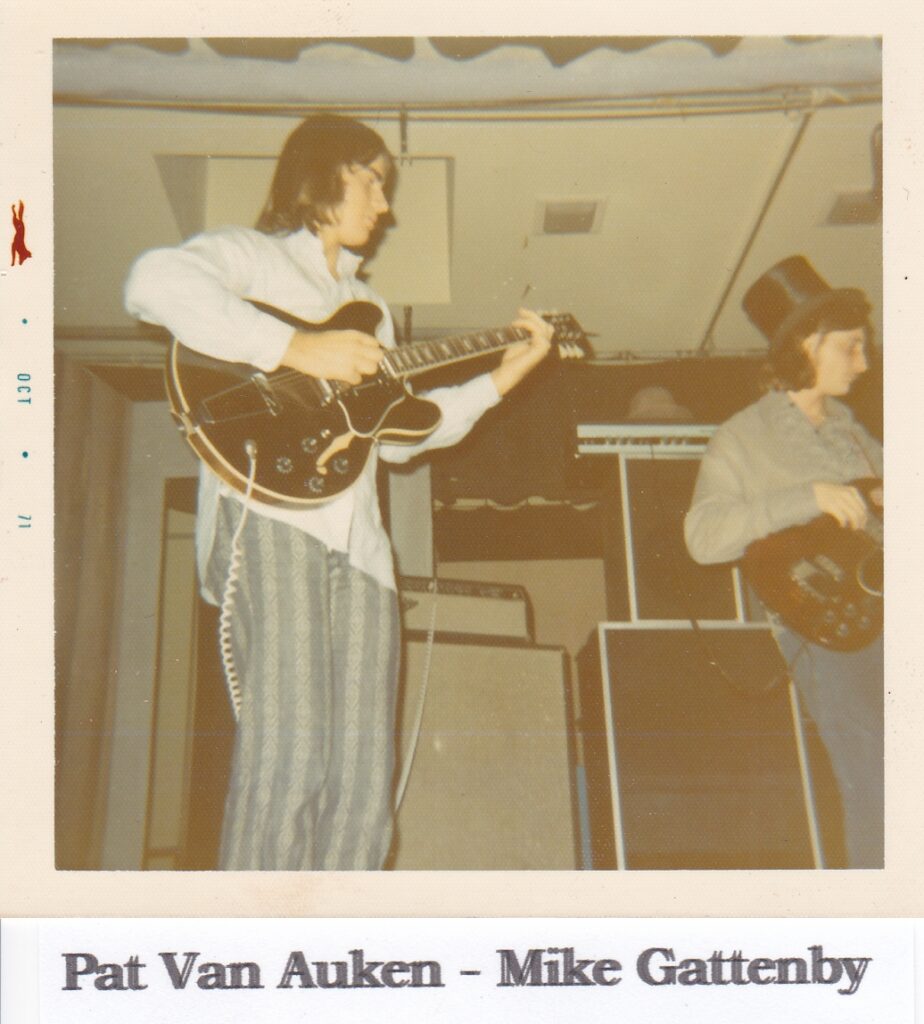
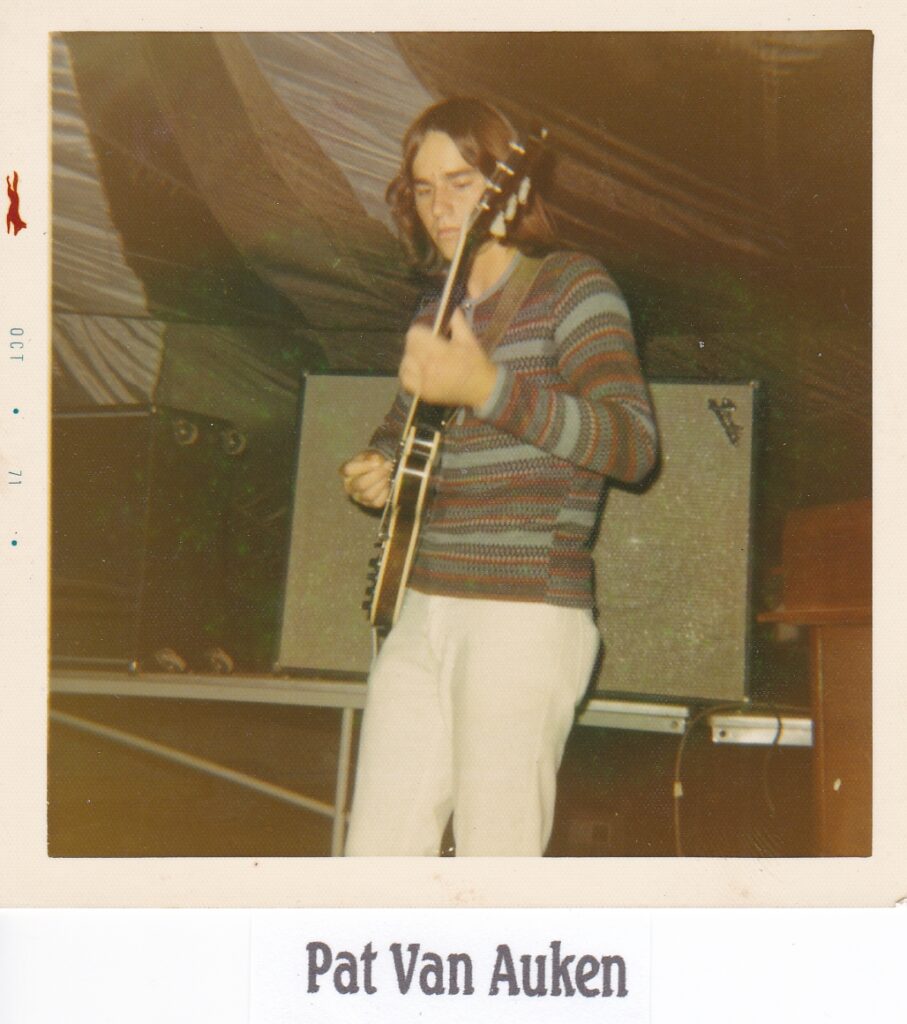
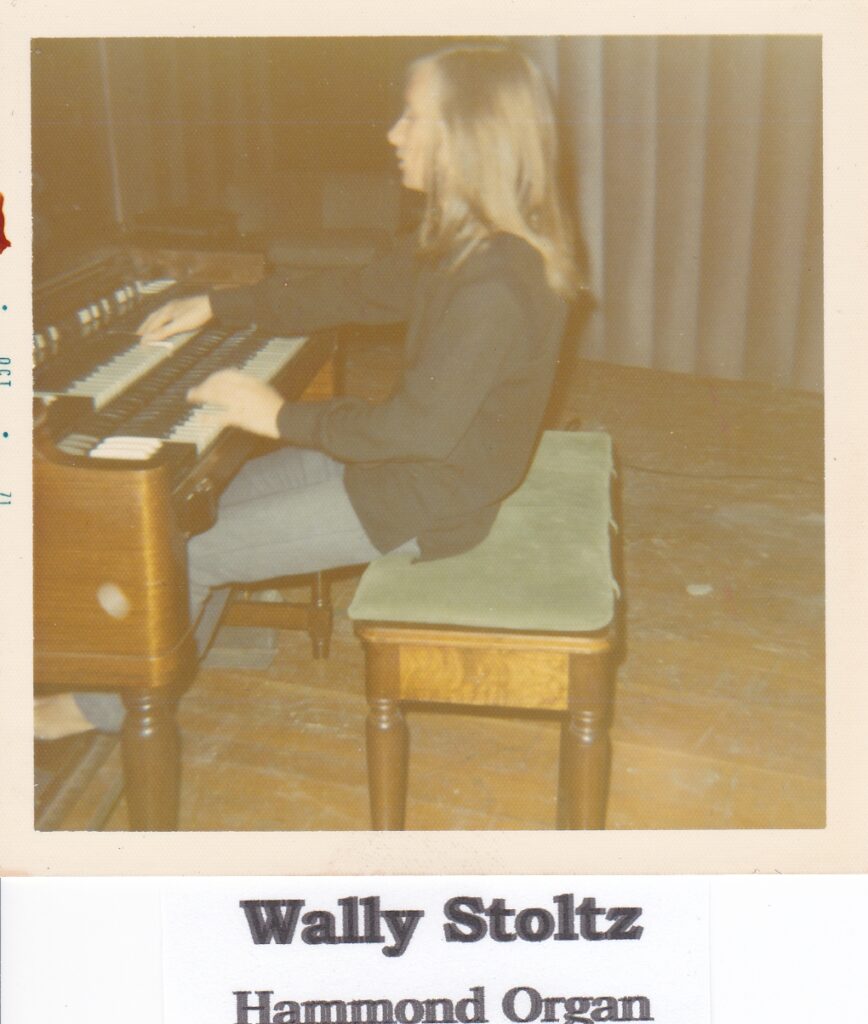

Tell me about the chemistry between the band members in Lady. How did the collaboration come together, and did individual contributions like the flute or certain guitar solos shape the sound in specific ways?
Jerry McMillen: We were, by this time, in our early twenties. The friendship between the core members was firmly established, which allowed a deeper trust and confidence in our approach to songwriting. We were never afraid to stretch out or experiment.
Jim Rolfe: Again, we just played from our hearts and we liked what came of it. We had a kinship and it showed. I think that’s what makes a great band. It’s not what you say, it’s what you understand without words.
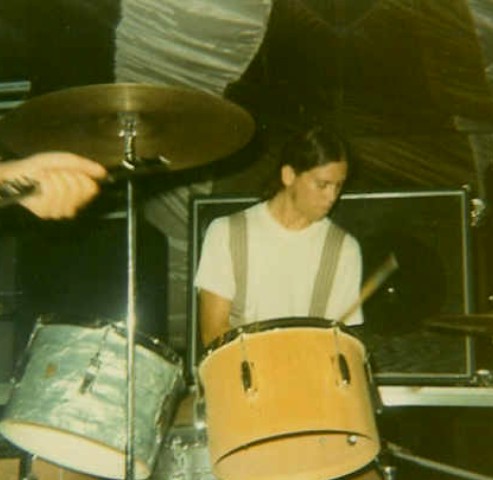
How did the band’s live performance dynamic compare to the studio recordings? Was there a significant difference in energy on stage?
Jerry McMillen: The two were vastly different! No longer tied to a guitar amplifier and only the flute or mic in hand left me with nearly absolute freedom on stage to move and dance as I wished. I believe it added a needed dynamic.
Jim Rolfe: The live performances were definitely more energetic than the Village recordings. When we were in the studio going live to 2-track (maybe 4-track, can’t remember), we were much more cautious. I am proud to say we knocked it out at the Village.

Which venues or clubs did you play, and who were some of the bands you shared the stage with?
Jim Rolfe: I can say I don’t remember gigging with any super popular bands. I do remember we played concerts with the top bands in our area.
Any wild or unforgettable stories from your gigs that still stand out to this day?
Jim Rolfe: Nothing in particular, except doing a gig where my Vega 400-watt solid-state head started smoking.
Jerry McMillen: We were never what one would call a dance band per se. It’s obvious that the music was more appropriate for show or concert appearances. We played a two-night stand at a go-go club in Hollywood. I believe it was Gazzarri’s, aka “Hollywood A Go-Go.” The first night was not received terribly well. On the way to the second night, we decided to write a quick song (more akin to a jam session) that could be stretched to many minutes. I can’t recall any of the lyrics, but it went over very well with what we called “teeny boppers” or “bubble-gummers.” We titled the tune ‘The Bubble Gum Song.’ Larry Weisman remembers that night because he had a flat tire on his 1957 station wagon.
Al Pisciotta once fried a very nice Ampeg bass amp at a concert in the park in Thousand Oaks, California. Fortunately, the amp belonged to the concert promoter and happened to be insured!
On a separate occasion, amid the flurry of chaos and noise on our set-ending “Mushroom Theme,” Dennis Christensen stomped his bass drum with such fervor that he and several drum pieces tumbled off the rear of the stage.


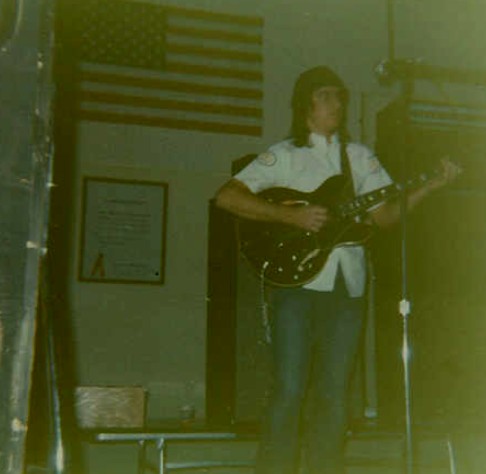
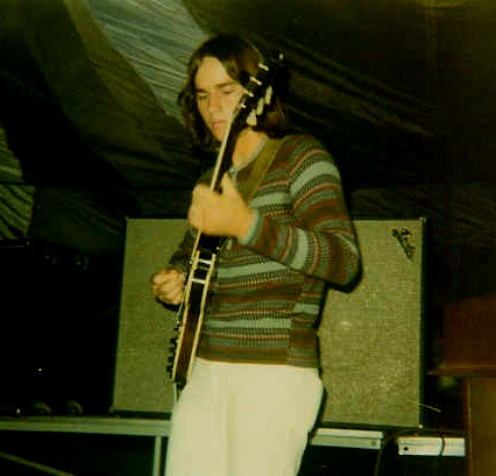
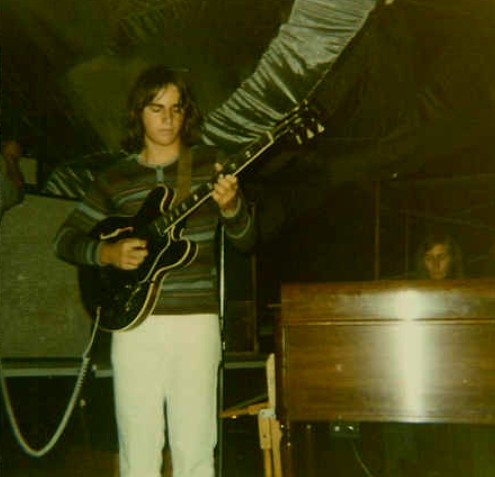
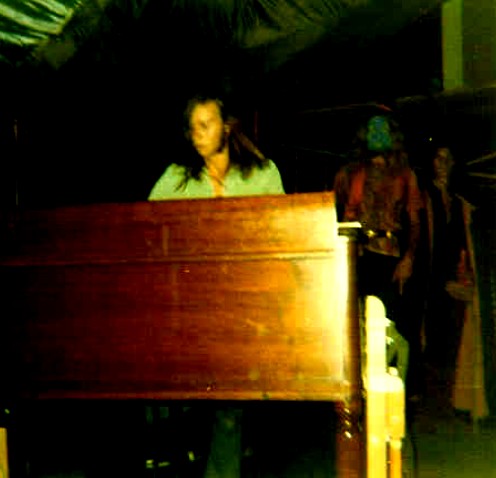
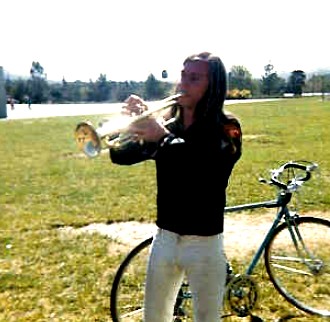
It must feel pretty surreal to have your music out after all these years. What does it mean to you?
Jerry McMillen: I cannot thank Guerssen enough for having contacted us in 2013 with an interest in Children of the Mushroom recordings. Our contact, Alex C., was gracious and patient and worked closely with us every step of the way. In 2023 we were again contacted by him regarding a re-pressing of that first album. During our discussions, “Lady” came up and we sent a couple of sample tracks. Interest grew, and it was decided to pursue a second album under the Children of the Mushroom name with “Lady” as the album title. It’s been a very exciting time for us, to say the very least.
Jim Rolfe: It’s wonderful to be able to share our musical adventures from the past. It’s great that Guerssen Records is taking this on and doing another release of The Children of the Mushroom, The Mushroom, and Lady tunes. These bands are one big family.
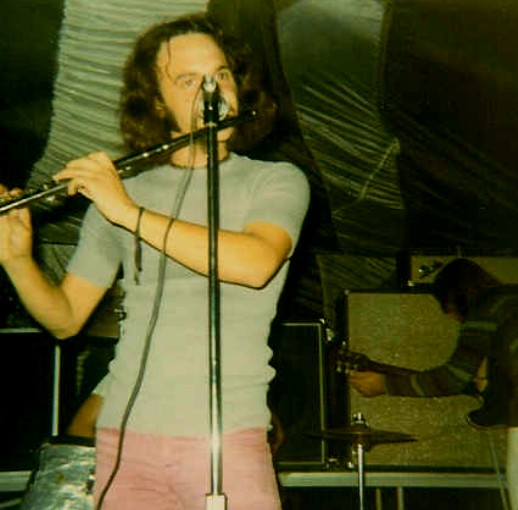
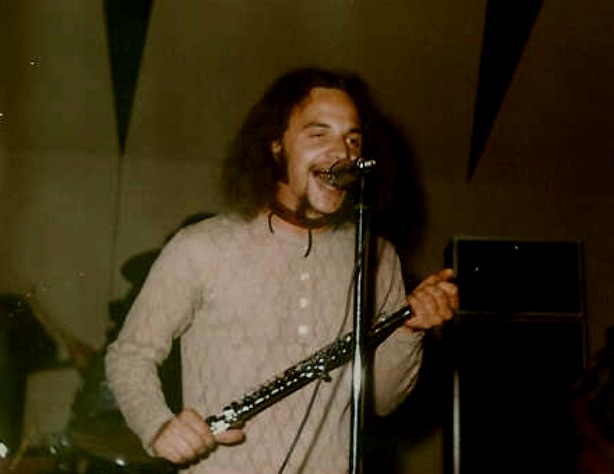


Do you feel like Lady was an evolution from Children of The Mushroom, or did it represent a totally new musical chapter?
Jim Rolfe: I believe it was a new musical chapter. We had some different players and a heavier sound. Moving from Bob Holland’s Vox organ playing to Larry Wiseman’s B3 playing was a big part of that.
Jerry McMillen: Dennis Christensen left The Mushroom around this time, so the search for a replacement on drums began. I don’t rightly recall just how we found Tom Galella, but I do remember Larry Wiseman and I having to “negotiate” him away from a group he had been playing with. We could not have made a better choice! Certainly, there were big changes in terms of material composition, but because of the core members of The Mushroom, the transition flowed relatively smoothly.

What did the members of Lady go on to do after the band?
Jim Rolfe: I went on to play with Cast of a Thousand, a local prog band. Jerry McMillen joined for a short bit when we were offered a trip to play in Germany. That never panned out.
Jerry McMillen: We all went into (or started) other bands for some time thereafter. I was with several bands through the late 70s into the 80s and performed several times with Children of the Mushroom and Lady at “BandTree” events between 2005 and 2015. (BandTree is a Jim Rolfe brainchild that reunites many of the bands and original members of groups from back in the day.) I should mention that over the several BandTree events we reunited for, many of our original members performed: Bob Holland, Larry Wiseman, Dennis Christensen, Al Pisciotta, Tom Galella, Jim Rolfe, Wally Stoltz, and Pat Van Auken. Paul Gabrinetti, rhythm guitarist on the 45 rpm, played and sang at many of these.
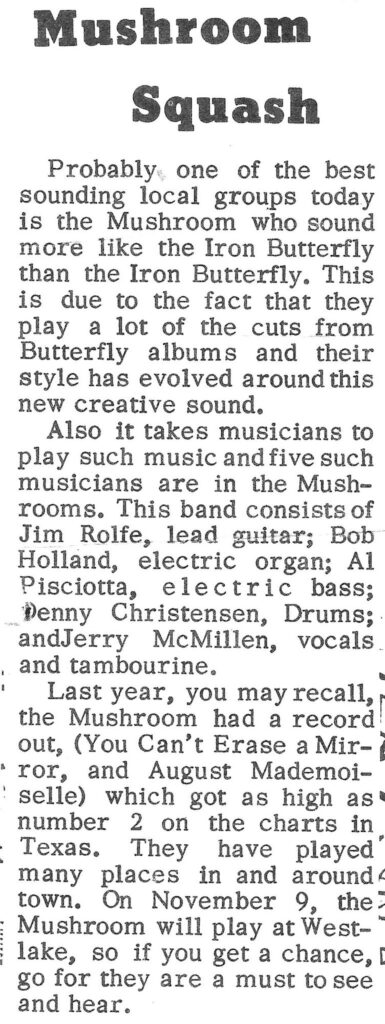
Back to Children of the Mushroom
Let’s rewind a bit. How did Children of The Mushroom first come together? What was the spark that got you all to form the band?
Jerry McMillen: Everything began with The Captives, of course, in 1965. Just a few friends who wanted to be involved with the music thing that was sweeping the planet. Problem number one: we were all quite new at our instruments! Al had taken up the bass, Dennis the drums, Mark McKean and myself had guitars. Of course, I would never ever say girls had anything to do with it! We were also beginning to mess with the cover tunes we had been playing and were already beginning to write original material. That may have been the spark. All we needed was a few player changes and a new name to turn spark into flame.
In a previous interview with Dennis Christensen Swanson, he talked about your love for 50s rock and early influences like The Beach Boys and The Beatles. How did these sounds shape the early days of Children of The Mushroom?
Jerry McMillen: In my opinion, surf music in general, which often used minor key signatures, had a direct effect on the psych music which followed. Songs like ‘Pipeline’ by The Chantays were particularly intriguing and mysterious. Remember The Beach Boys’ foray into psych with ‘Good Vibrations.’
Tell me about The Captives. What kind of music did you play, and how did it influence Children of The Mushroom?
Jerry McMillen: The band was beginning to become a bit more proficient at our instruments. We just wanted to play. We had learned enough cover tunes to get through a set or so. We had a business card printed that said “Music for all occasions.” We played at parties and school gatherings, recreation center dances, etc.

Can you dive into how Children of The Mushroom was officially formed?
The Captives’ rhythm guitarist, Mark McKean, left the group and was replaced by Scott Lee (guitar and vocals) in 1966. Bob Holland (15) joined that same year on Vox organ. Scott left the band in 1967. Paul Gabrinetti joined on guitar and vocals, the name changed to Children of the Mushroom, and soon thereafter we would enter the studio.
The A-side of your 45, ‘August Mademoiselle,’ was written by Bob Holland. Can you walk me through the songwriting process? Was there any particular moment or event that inspired that track?
Jerry McMillen: Words and music were composed by Bob. He left the vocal adaptation to me. The song itself was built around the lifestyle of my soon-to-be mother-in-law. The use of the word “august” in the title had a double meaning in my interpretation. It can have a regal connotation or describe a person in mid to later life. I can’t say for sure, but it may have been inspired by the Rolling Stones’ ‘Mother’s Little Helper.’

What was it like recording at Nashville West in Hollywood? Can you take us through the experience—from rehearsals to laying down the tracks?
Jerry McMillen: Our rehearsals consisted of ordinary practice sessions working on material, etc. Locations included parents’ and friends’ garages, living rooms, and office spaces. One of the last rehearsals, if I remember correctly, was in the living room of one of our two producers. Maybe they were making sure we were studio-ready, eh? One can imagine what being in the studio was like for us, never having been in one before. Teenaged men ranging in age from eldest at 19 to youngest at 16. We were thrilled and somewhat frightened, but thanks to our producers, who were so supportive, we gained confidence as the day went on. There were moments of elation and moments of disappointment, like Dennis being asked on ‘You Can’t Erase a Mirror’ to drum softer, as the song (to our minds) was supposed to be heavy. There was a really exciting and surprising spot while laying down the lead guitar track where the final crescendo and psych noise end the song. The fuzz guitar plus vibrato bar on the Fender Mustang together received a cheer from the booth. We all knew it was the last take.
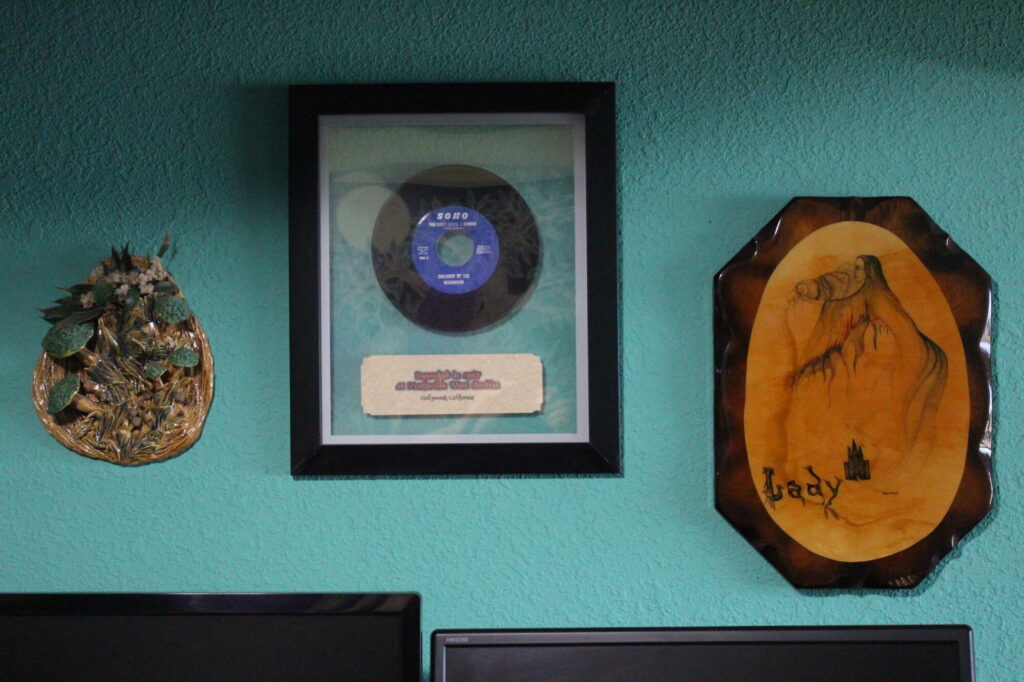
How did you achieve that signature sound, particularly with fuzz and effects? Any tricks or techniques used to get that vibe in the recording?
Jerry McMillen: The fuzz unit was critical to the COTM sound. It was a “Jordan Fuzz Tone” and had a unique sound for its day. I don’t recall how we discovered it, but no one in our area had one. There were, to my recollection, no stomp box pedals back then, and the Jordan plugged directly into my guitar jack so I could control the amount of fuzz intensity. Bob Holland’s Vox organ was also critical to the soundscape.
What are some of your most vivid memories from the recording process? Were there any unexpected moments that shaped the final sound of the tracks?
Jerry McMillen: You have to listen closely to catch it, but there is an anomalous noise at the very end of ‘You Can’t Erase a Mirror.’ It sounds like a cymbal crash. When the fuzz tone was switched off during high gain, it made a rather loud click sound, with reverb being generated at the mixing board. The engineer suggested possibly cutting it from the track but finally decided to leave it in. Plus, our two producers, Dick Parker and Dick Torst, sang background harmonies on ‘August Mademoiselle.’
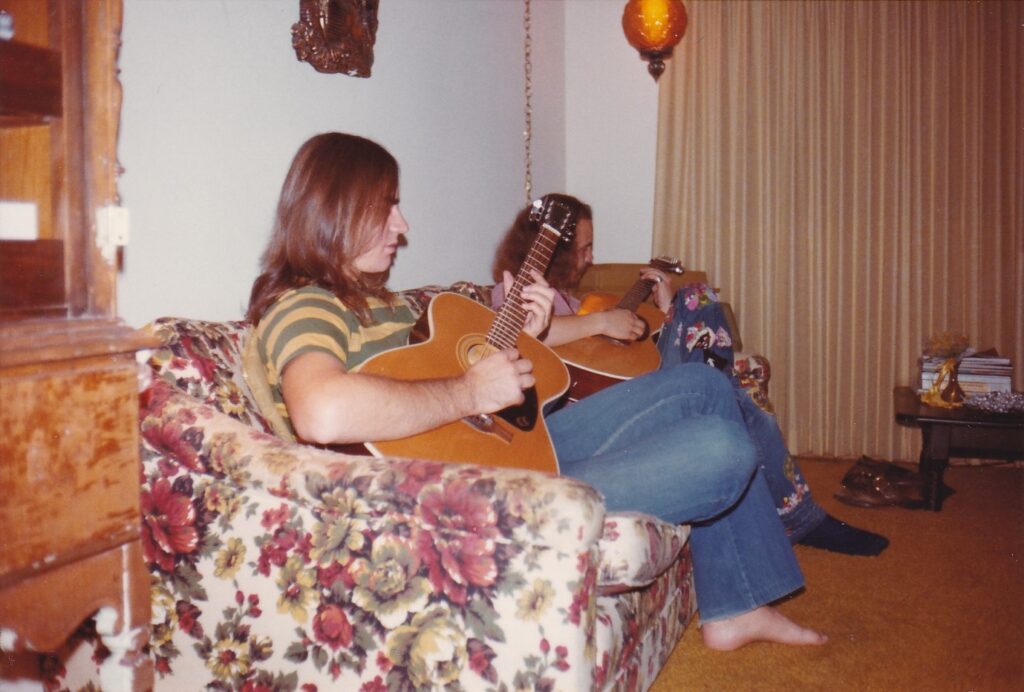
‘You Can’t Erase a Mirror’ is often called a haunting, slow number compared to the upbeat ‘August Mademoiselle.’ How do you see the contrast between the two, and what makes this single a timeless piece in the garage and psychedelic scene?
Jerry McMillen: I believe the energy of the young men who wrote them, along with the time period in which the songs were penned and the strong feelings we had about the songs themselves, were major factors. The simplicity in some of the lyrics could be considered as well.
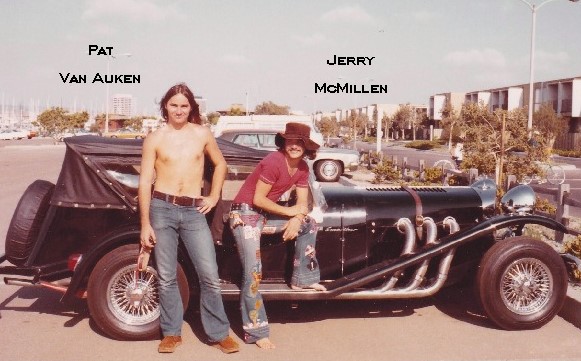
Your song got some airplay in El Paso. How did the song’s reception impact the band? Did it open up new opportunities for you?
Jerry McMillen: It was so exhilarating hearing them come over a local radio station the first time! We, of course, wanted to set up dates and travel to El Paso to play and promote the band. Our producers would have wished the same, but two factors played into it. Firstly, some members were still under 18 and hadn’t even finished high school and would have needed parental permission. Secondly, the funding for a possibly risky venture like that was not available.
After Bob Holland left and Larry Wiseman joined, how did the sound of Children of The Mushroom evolve? What inspired you to incorporate the flute and experiment with that more Jethro Tull-inspired vibe?
Jerry McMillen: Larry first took up the bass guitar spot and later brought a model A Hammond organ complete with Leslie speaker into the band. That had a tremendous effect on the sound and composition of the music, not to mention the difference in terms of Larry’s personal playing style. I was quite enamored with Ian Anderson and Jethro Tull’s baroque stylings, though I don’t see much influence composition-wise.
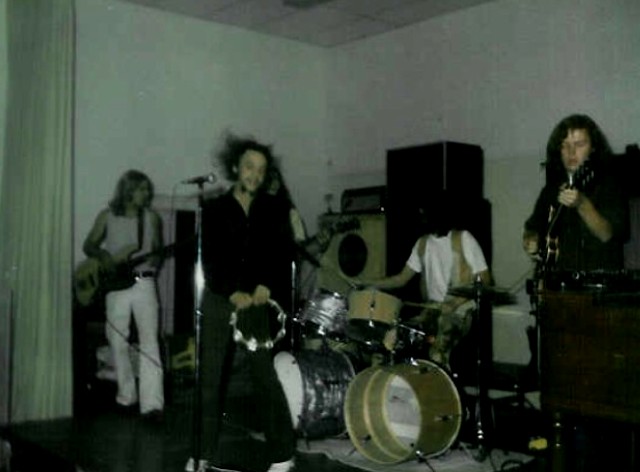
What do you hope people take away from the story of Children of The Mushroom and Lady? What do these projects still mean to you after all these years?
Jerry McMillen: It is still amazing to us that the music has lasted these 50-odd years, and to be afforded the opportunity to have not just one but two albums released is simply a “mind blower,” man. We sincerely hope that the second album is well received and included in the band’s legacy. Thanks go to all who have enjoyed the music and all who made the journey possible!
Tom Galella: Not much I can add except that my time drumming for Lady is one of the highlights of my drumming career. I have played quite a bit of “original” music, and the Lady originals are the best I have ever been privileged to play on!
Larry Wiseman: I believe the sound change had a lot to do with the personnel change and also the equipment change. In The Mushroom, Bob Holland played a Vox Jaguar organ. In Lady, I played a Hammond B3 organ with a Leslie. There is a big difference in sound. The Mushroom was influenced by Iron Butterfly, The Doors, and groups of that sort, whereas Lady was more of an open, progressive style, jazzy rock-based style. Also, the introduction of the flute by Jerry changed the dynamics of the music. The music of Lady was pretty much a collaboration between all the members. A lot of brainstorming was involved. Jerry and I had rented a three-bedroom house in Thousand Oaks, where two bedrooms were for living in and the third bedroom had the band gear all set up. We would lock ourselves in there and just create the songs. Since all the gear was on the premises, we could pretty much create anytime we wanted to. Those were some really fun times!
Klemen Breznikar
Headline photo: Bob Holland, Larry Wiseman, Dennis Christensen, and Jim Rolfe’s hands | Lady, 1970
Guerssen Official Website / Facebook / Instagram / X / Bandcamp / YouTube
Children of the Mushroom: The Untold Story of a 60s Garage Psych Band
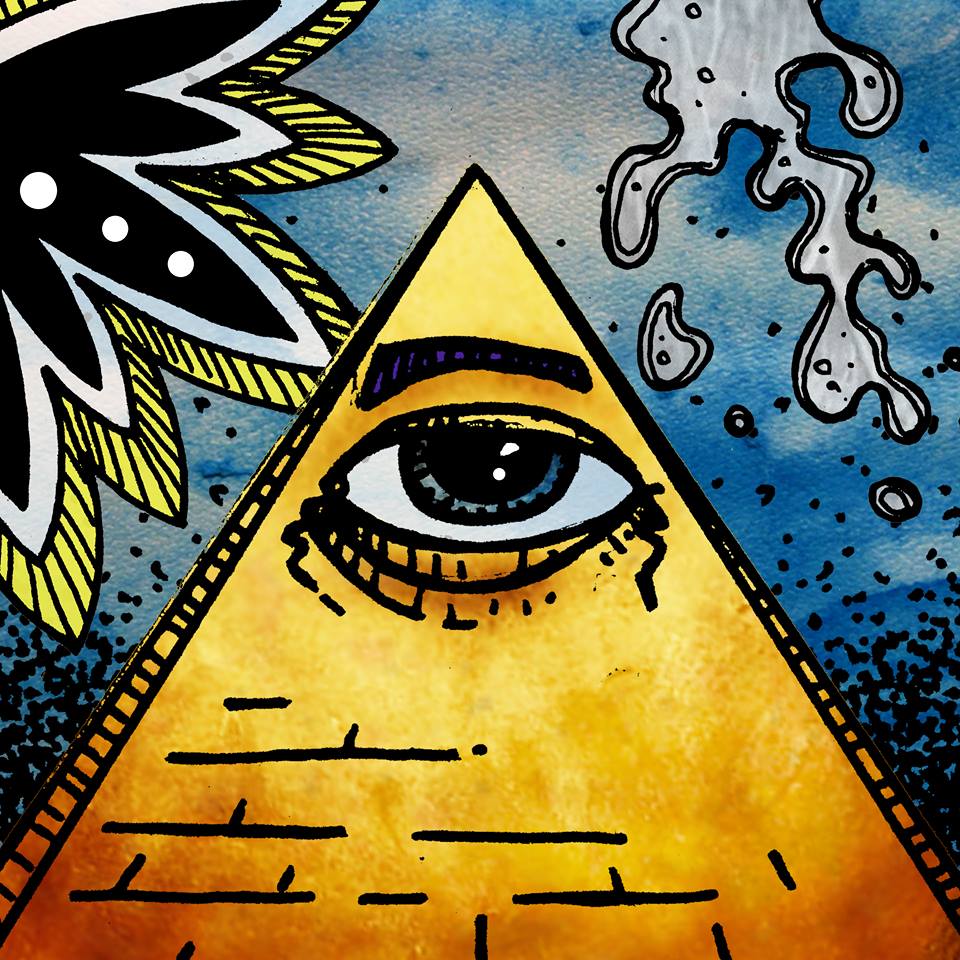

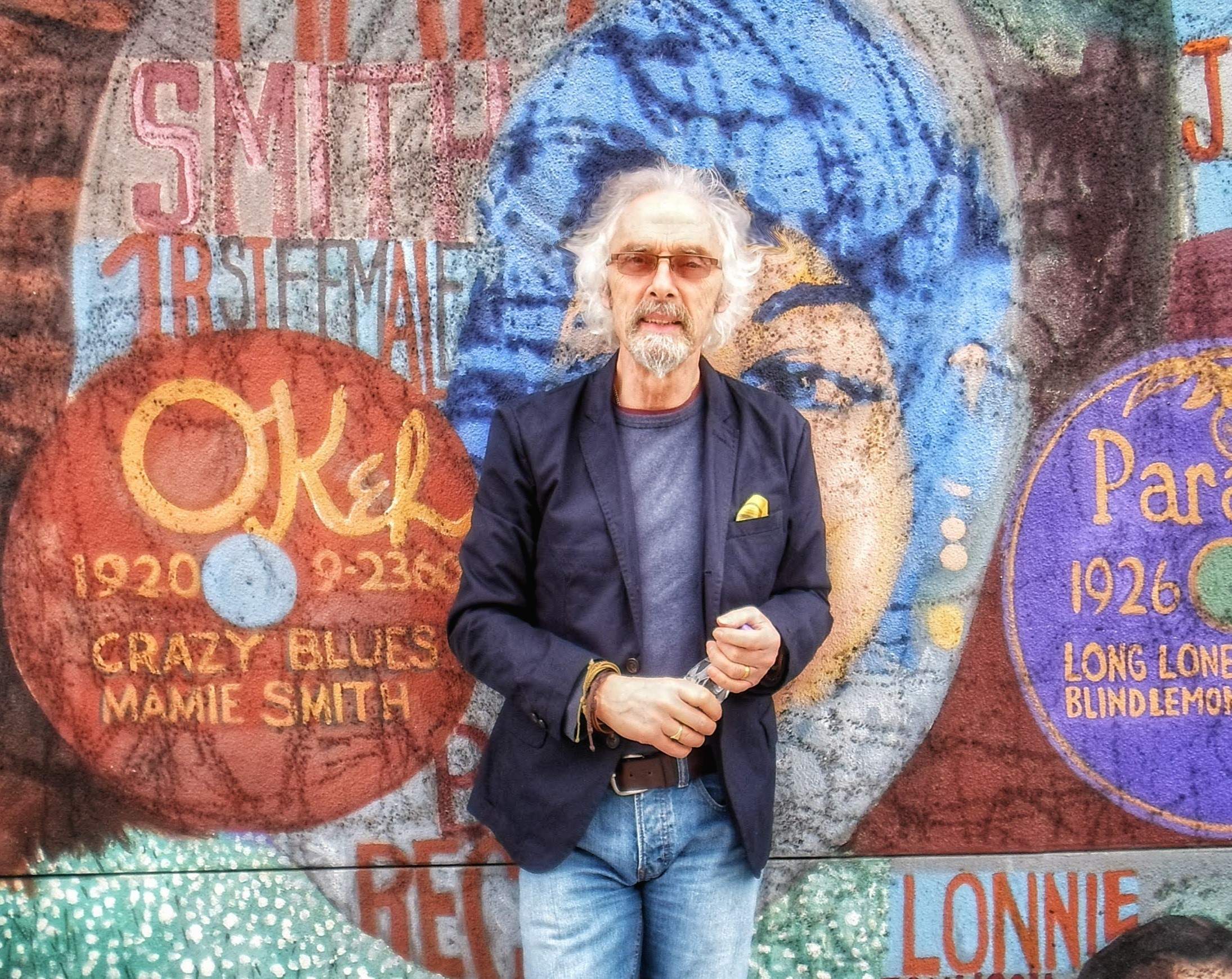


Great Read,after all these years!